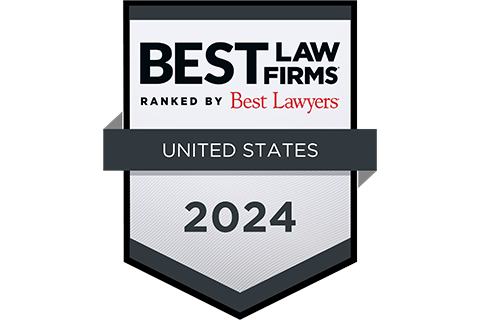Court Hears Arguments on Patent Eligibility of Computer-Implemented Invention
On Friday, February 8, the Federal Circuit heard oral arguments en banc in CLS Bank v. Alice Corp. (Case No. 2011-1301), a closely watched dispute regarding the standard for patent eligibility under 35 U.S.C. § 101. The Federal Circuit had previously granted CLS Bank’s petition for rehearing en banc on two questions: (1) What test should the court adopt to determine whether a computer-implemented invention is a patent ineligible “abstract idea”; and when, if ever, does the presence of a computer in a claim lend patent eligibility to an otherwise patent-ineligible idea?; and (2) In assessing patent eligibility under 35 U.S.C. § 101 of a computer-implemented invention, should it matter whether the invention is claimed as a method, system, or storage medium; and should such claims at times be considered equivalent for § 101 purposes?
Here are a few highlights from the arguments:
- Generally, the questioning focused primarily on how to determine whether a patent claims an abstract idea, and how or when a computer, when combined with a potentially abstract idea, would result in a patent-ineligible claim. CLS defined an unpatentable abstract idea as one that can be performed in the mind or just with a pencil and paper (as in CyberSource Corp. v. Retail Decisions, Inc., 654 F.3d 1366 (Fed. Cir. 2011)), noting that, in the computer context, merely stating the abstract principle and adding the words “compute it” does not make a claim patent eligible. Alice defined the test as whether the patent claim, as a whole, claimed “significantly more” than just an abstract idea. For example, Alice asserted that the test should be whether “the patentee applied computer technology in some practical way such that it is not just a claim to an abstract idea, but to an application of that idea.” Alice’s proposal mirrors one of the suggestions raised by the software industry at the recent Software Patent Forum for reforming software patents being held by the USPTO.
- There seemed to be a consensus that the mere use of a computer to perform basic calculations, or to perform some other token post-solution function, is not patentable (e.g., Alice distinguished between a computer that plays “a significant role in permitting the claimed invention to be performed” and one that is “simply there to do a calculation faster, or simply there to print out a result.”). There also appeared to be agreement that, generally, a computer that is specially designed to perform a particular function could be patentable. In this respect, the Court’s position seems consistent with the earlier § 101 cases from the Federal Circuit (e.g., CyberSource), suggesting that this en banc panel will not be creating any bright-line test like the infamous “machine-or-transformation” test, but instead, will favor a more flexible patent-by-patent, claim-by-claim approach.
- Much of the rest of the discussion focused on CLS’s characterization of the patent claims, with a particular focus on the system claims, and whether the form of the claim affected its patent eligibility. Judge Moore was skeptical of CLS’s argument that one of the system claims at issue (claim 26 of the ‘375 patent)—which recited several “tangible” components of a system, including a computer—recited an abstract idea. Judge Linn noted that “every claim in every patent can be distilled down to some essential summary . . . but that is not the way we assess . . . patent eligibility.” The questioning suggested that the Court may view the recitation of physical components to form a special purpose computer to be sufficient for § 101 patent eligibility. If this remains true, this raises an interesting question of whether Beauregard claims will become even more popular because they recite “tangible” elements in the form of computer-readable code in a storage medium without imposing additional structural limitations.
- There was some discussion of the scope of, and interplay between, §§ 101, 102, and 103. The Court queried whether § 101 issues should properly be decided before §§ 102 and 103 issues (as CLS asserted), and whether the “inventive concept” discussed in Mayo should properly be a §§ 102/103 consideration, rather than a § 101 issue.
- The United States (USPTO) also presented its arguments, primarily siding with CLS. The USPTO first noted that it did not believe that a bright line test for § 101 patentability was workable. The USPTO then argued that an “inseparability” requirement should be put in place for computer-implemented inventions. Under that construct, a computer-implemented invention that applies an abstract idea would only be patent eligible if the computer is “inseparably” linked to the invention. The USPTO also asserted that adding a standalone general purpose computer to an abstract idea did not make a claim patent-eligible. The USPTO further did not agree that analysis of § 101 issues should come before analysis of § 102 issues because the USPTO could most efficiently address all of the validity issues together.
- There was some discussion of whether the patent-in-suit was preemptive. Judge Dyk asked Alice to identify alternative methods to implement the concept(s) (e.g., end-of-the-day netting) described in the patent-in-suit without infringing the patent claims. Alice responded by emphasizing that the claims only claimed a particular method, but ultimately was unable to identify specific alternatives.
http://www.cafc.uscourts.gov/oral-argument-recordings/search/audio.html. We will issue a follow-up when the decision on this matter is issued.

